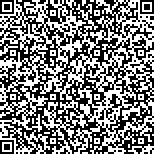| 引用本文: | 马元,丁亚辉,屈百鸣,车贤达,陈秉宇,沈健,邹海.PCI术后早期抗血小板药物反应性与西雅图心绞痛量表评分的相关性研究[J].中国现代应用药学,2017,34(4):587-590. |
| MA Yuan,Ding Yahui,Qu Baiming,Che Xianda,Chen Bingyu,Shen Jian,Zou Hai.Correlation between Response Variability of Platelet Aggregation Inhibitors and Seattle Angina Questionnaire in Early Stage Undergoing Percutaneous Coronary Intervention Patients[J].Chin J Mod Appl Pharm(中国现代应用药学),2017,34(4):587-590. |
|
| 本文已被:浏览 2062次 下载 1492次 |

码上扫一扫! |
|
|
| PCI术后早期抗血小板药物反应性与西雅图心绞痛量表评分的相关性研究 |
|
马元1, 丁亚辉1, 屈百鸣1, 车贤达1, 陈秉宇2, 沈健2, 邹海1
|
|
1.浙江省人民医院, 心血管内科, 杭州 310014;2.浙江省人民医院, 输血科, 杭州 310014
|
|
| 摘要: |
| 目的 评估PCI术后早期血栓弹力图(thromboelastography,TEG)测定的阿司匹林和氯吡格雷反应性与西雅图心绞痛量表(SAQ)评分之间的相关性。方法 43例PCI术后患者使用TEG测定出花生四烯酸(AA)和二磷酸腺苷(ADP)的最大血块强度(maximum amplitude,MA)和血小板抑制率(inhibition rate,IR)。阿司匹林反应性根据AA-IR分为低(<50%),中(50%~85%),高(>85%)。氯吡格雷反应性根据ADP-MA分为低(>47 mm),中(31~47 mm),高(<31 mm)。根据2种药物的反应性组合为联合高反应组、联合中反应组和联合低反应组。患者在PCI术前和术后4周进行SAQ评分。结果 3组患者的性别构成、年龄、植入支架数、高血压和糖尿病患病率的差异均无统计学意义。3组患者术前SAQ评分无显著差异,术后4周SAQ评分均较术前明显提高,但联合低反应组患者的SAQ评分较其他2组相对较低(P<0.05)。术后SAQ评分与抗血小板药物反应性之间存在相关性(Pearson法)。结论 PCI术后早期阿司匹林和氯吡格雷反应性与SAQ评分具有相关性,抗血小板药物低反应可能是患者PCI术后早期再发心绞痛的重要危险因素。 |
| 关键词: 血栓弹力图 经皮冠状动脉介入治疗 抗血小板药物 药物抵抗 西雅图心绞痛量表 |
| DOI:10.13748/j.cnki.issn1007-7693.2017.04.024 |
| 分类号:R541.4;R446.11 |
| 基金项目:浙江省医药卫生科技计划项目(2012KYB013) |
|
| Correlation between Response Variability of Platelet Aggregation Inhibitors and Seattle Angina Questionnaire in Early Stage Undergoing Percutaneous Coronary Intervention Patients |
|
MA Yuan1, Ding Yahui1, Qu Baiming1, Che Xianda1, Chen Bingyu2, Shen Jian2, Zou Hai1
|
|
1.Zhejiang Provincial People's Hospital, Department of Cardiology, Hangzhou 310014, China;2.Zhejiang Provincial People's Hospital, Department of Blood Transfusion, Hangzhou 310014, China
|
| Abstract: |
| OBJECTIVE To assess the correlation between response variability of aspirin and clopidogrel detecting by thromboelastography(TEG) and Seattle angina questionnaire(SAQ) in early stage undergoing percutaneous coronary intervention (PCI) patients.METHODS Forty-three post-PCI patients were detected maximum amplitude(MA) and inhibition rate(IR) of arachidonic acid(AA) and adenosine diphosphate(ADP) using TEG. According to AA-IR, aspirin response variability defined as: low(<50%), medium(50%-85%) and high(>85%). According to ADP-MA, clopidogrel response variability defined as: low (>47 mm), medium(31-47 mm) and high(<31 mm). The patients were divided into 3 groups by antiplatelet drug response variability: combined high response group, combined medium response group and combined low response group. SAQ assessment was performed before and 4 weeks after PCI in all patients. RESULTS Among 3 groups, the gender, age, stent count, and prevalence of hypertension and diabetes had no significant differences. SAQ scores in 3 groups had no significant differences before PCI, and increased 4 weeks after PCI. But SAQ scores in the combined low response group were lower than other groups relatively. Relevant between post-PCI SAQ scores and antiplatelet drugs response was confirmed by Pearson correlation coefficient. CONCLUSION Response variability of aspirin and clopidogrel is associated with SAQ scores in early stage post-PCI patients. Antiplatelet drug low response may be an important risk factor of angina pectoris in early stage post-PCI patients. |
| Key words: thromboelastography percutaneous coronary intervention platelet aggregation inhibitors drug resistance Seattle angina questionnaire |
